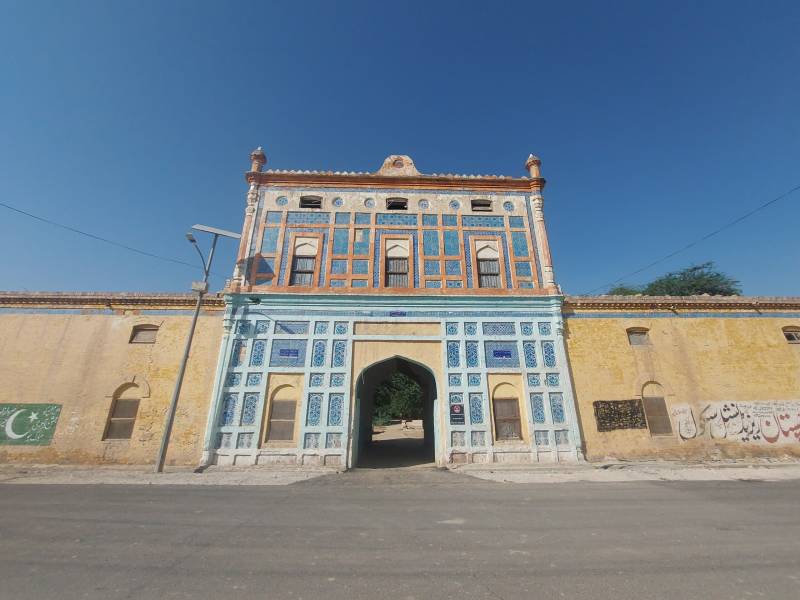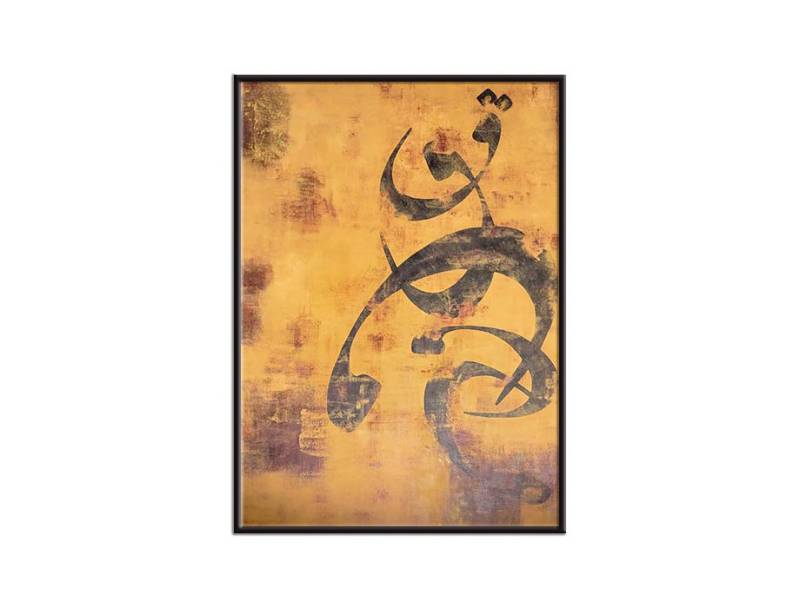As I emerge from the plane and the roar of its engine fades away, the Quetta International Airport welcomes me to the province. It is my first time in the city and largely in the province as well, barring the one time I went from Karachi along the Makran Coastal Highway towards Gwadar and wrote about the Hingol National Park. I am on an official assignment regarding the rehabilitation of the victims of the deadly floods that have wreaked havoc in the country, particularly in the southern provinces. On exiting the airport, I am reminded of the cover story of a magazine I saw as a kid in a Lahori bookshop. "A province in peril", it read, before indulging in intricate details about what exactly ailed this province.
In the seventy-five years of our existence, numerous academic texts to the same effect have been written on the province, but its problems do not seem to be fading away. Despite this load of academic onslaught, the province has had to contend with a lot of perils to date, not the least because outsiders are often at odds to decide the difference between Baloch and Balochi. This article doesn’t purport to add to the informed literature about this province, but only to experience this place on the basic understanding of an area where people live and belong.
Our driver waits for us at the arrivals lounge, and as soon as we are done loading our luggage into the car, he starts driving. We are headed to Naseerabad, our place of posting for the next two months. While in the city, we pass by the vaguely visible Earthquake Memorial; in 1935, the city was razed to the ground by the tectonic plates at play, killing anywhere between 30,000 and 60,000 people. It held the record for being the deadliest earthquake in South Asia up until 2005. Quetta today, of course, is a different city; it has malls and parks, sprawling markets, and lots of activity. There’s almost an impulse to forget the precarious situation of the province it is the capital of, given its immediate contrast to the province’s reputation for peril. It’s as if our driver has sensed this thought and adds his wry sense of humour: "Quetta today is a safer city than it was in the past, but people still expect to be welcomed by bomb blasts here."
We are soon in the peripheries of the city, upon the Sariab road that will transport us out of the capital. The road must be familiar to anyone with a passing interest in the country’s affairs; it is notorious for the series of blasts that have rocked it over the years.
"This is the most dangerous part of the city," our driver speaks again. "We will try to drive fast and hope no one kills us today."
When the going gets rough, the tough get a sense of humour.
***
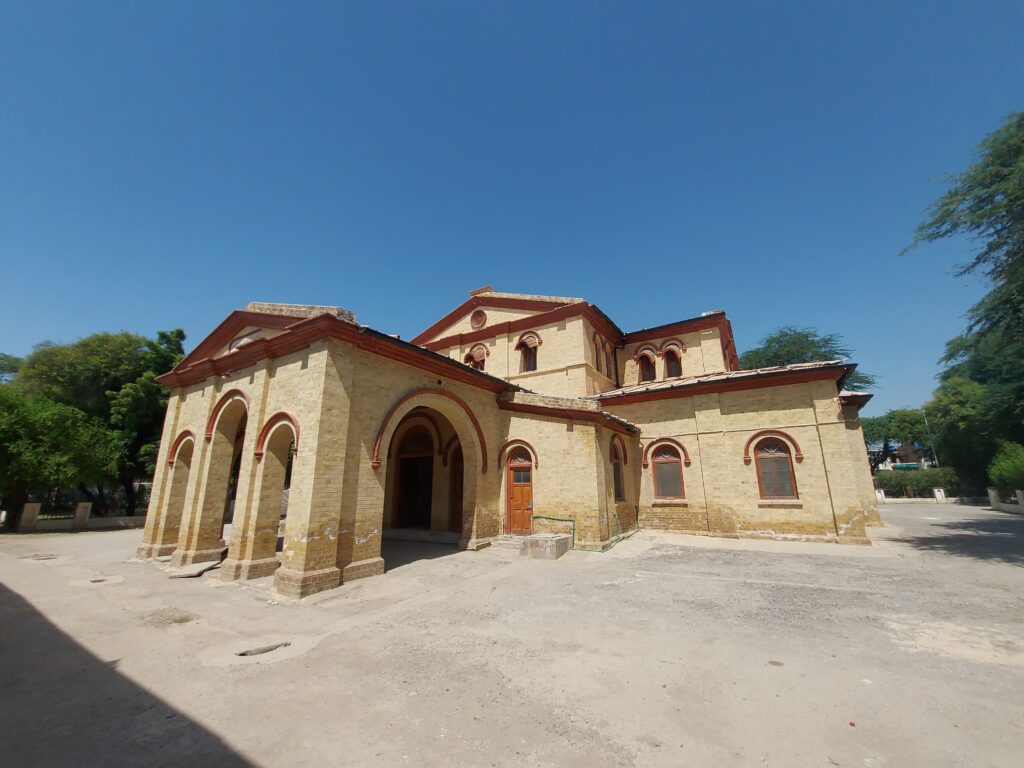
As we step inside the Victoria Hall in Sibi, a treasure trove of fascinating and, as our guide asserts, rare artefacts awaits us. Within its walls, precious copies of the Quran in Sindhi and a plethora of portraits adorn the space. Many of these images are touted as rare; some depict the union of Balochistan with Pakistan; there’s one portrait of Nusrat Bhutto with Benazir Bhutto that is captioned to be only found here; and another picture in which the four brothers Ismail Khan, Darya Khan, Ghazi Khan, and Rahim Yar Khan pose for the camera. Today, cities in Punjab and Khyber Pakhtunkhwa are named after these brothers. When the British captured Sibi in 1878, they renamed it Sandemanabad, and Victoria Hall continues to be the most significant memorial of that period. It was also known as Jirga Hall, for it housed the jirga held between the British and the Baloch tribals during the annual Sibi Mela. Constructed in 1903, the place is now stripped of its former grandeur, but this colonial edifice is a remarkable site in the city. Now converted into a museum, it’s not the only place to remember the British by.
All across the breadth of Balochistan, colonial underpinnings are palpable, right from the pre-partition buildings in the provincial capital to the immense network of railway tracks along with the precisely dug tunnels through the mountains that can be seen often while travelling in the province. Most of these have now caved in or are considered unsafe - we were barred from visiting the famous Bolan Pass due to security concerns - and much of the railway track has either been plundered or rendered useless. While places like the Sibi Junction seem to deny this, a closer reading of reality lays bare the conditions. In the critically acclaimed Pakistani movie Moor, a particularly striking sequence relates to the Sheela Bagh Railway Track, where the camera pans above the ground to show a missing piece of railway track being cut perpendicularly by a road that now passes through it.
But even when the present has not been too kind to the province, its past has remained steady. The Neolithic ruins of Mehergarh, situated on the Kacchi Plain, are the earliest sites in the country showing evidence of farming and herding, predating the Indus Valley Civilization’s marvels of Mohenjodaro and Harappa. Such sites give the province a character that is almost timeless. And while the British remain the most prominent invaders to have left their footprints in Balochistan, the scattered and diverse local culture seems to find refuge largely in one figure: Mir Chakar Azam Rind.
From public offices to the nomenclature of roads, from statues built in different cities to the names of male children, Chakar Azam is present throughout the province. Sometimes a fierce warrior aiding the exiled Mughal Emperor Humayun to re-capture Delhi, sometimes a complex figure in the Baloch epic of Hani and Shah Mureed, various stories of the character abound. However, the links between the past and present are often usurped in the province, much like its railway tracks. And there can be no greater reminder of this than Chakar Azam’s fort in Sibi. Located inside the Cantonment, not only is the place in absolute shambles, but permission also has to be sought to pay homage to the tattered history of the region.
***
We have started working on the renovation of a public library in the city of Dera Murad Jamali, the administrative capital of the district of Naseerabad. Our routine activities continue, ranging from the distribution of aid we have received to the drainage issue of flood waters. Through the load of duties we are to perform, this miscellaneous task was eagerly taken up by us, as it’s reaffirming to have people ask you for the most important of all rights: books. The members of the library, most of them university students preparing for competitive examinations, have also given me a list of the books they need. I upload the lists with appeals for donations on my social media accounts, and the response is immense. Some people abide by the list; others go the extra mile and send over what they want to.
As I am transferring the books to the library and placing them on the newly built shelves, a member of the library comes up to me, interested in what I hold in my hands: Nelson Mandela’s Long Walk to Freedom. He looks at it curiously and then smiles and says, "This book is banned in Balochistan. They wouldn’t let us have it."
He doesn’t press on clarifying who "they" are, but it is just as well. Though I’m sure there’s no official ban on the book in the province, things in this country don’t always follow the rules. I confirm this from an acquaintance who belongs to Turbat, and he tells me a story of a local bookstore in Turbat stocking this book, and "they" came to take the owner to task. I’m unable to grasp the reason for this ban, but it’s probably because the word "freedom" in the title rubs some people the wrong way.
This culture of banning, however, is definitely not exclusive to Balochistan. In another province of the country, freedom of another sort is being suppressed. The highly acclaimed Pakistani film Joyland has been banned in Punjab, apparently because it promotes certain agendas that "they" don’t like. No one really stops to ask if "they" have actually read the book or watched the movie, but as a nation, we are already past asking such questions. What has become the natural order of the day is taking freedoms away of various kinds, only because "they" have the power to do so.
At night, we gather around the LED screen in our room to watch Pakistan play India in the T20 World Cup. All around us, people in the city are cheering for their country to win - the craze for cricket is temporarily sealing all the cracks that might be present underneath. And as Pakistan lost to its arch rivals, debates started on how some rules of the game might have been twirled to the benefit of India. This is what power always inspires. Something tells me this could be a parable for the relationship of this province with itself and with the state.
Powers and rights are conjoined anyway, not always in the holiest of ways.
***
We are stopped at the checkpoint set up on the entry to the neighbourhood of Mariabad and are allowed inside only after showing our identity. This is the routine, as the security concerns related to the area deny access to everyone. Mariabad, along with the Hazara town, are almost exclusive enclaves for the people belonging to the Hazara community residing in Quetta. Estimates show their population to be around 4 lacs, and the community has suffered immensely through the years.
We are taken first to the graveyard of the community by our friend, himself a Hazara. Since it’s a Friday, the place is brimming with people, all gathered to pray for the departed. He points us to a compound that is separated from the rest. "When the first incident happened, we buried the martyrs here to differentiate them from the routine deaths." But the community was in for a sordid surprise. The killings became routine, so much so that the space designated for the martyrs was soon overwhelmed.
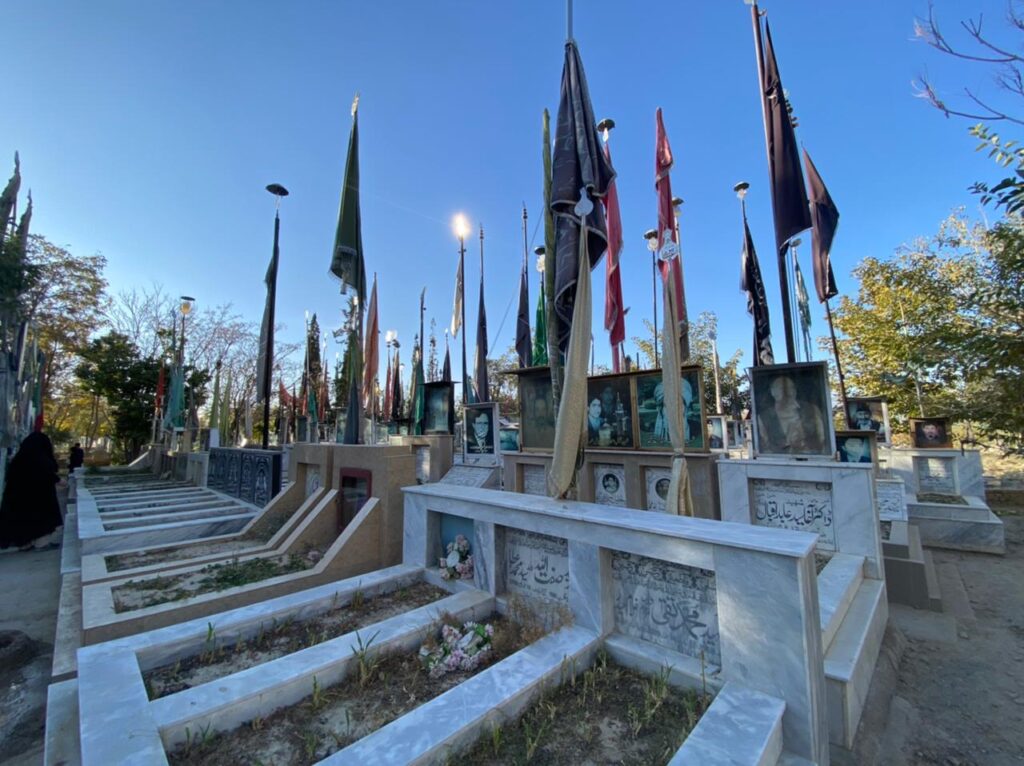
Today, the martyrs are everywhere.
They say that there’s not one Hazara family that hasn’t had a son killed. The graves of the martyrs carry pictures of the people buried within, replete with details about how it was that the person was targeted.
We are the only non-Hazaras in the region and are duly warned by our host that we might be given some harmless "looks" by the locals, as they are not very used to other people being here. We are then taken to the picnic spot in the area. Along the way, I notice the number of women walking and driving unaccompanied by males, in almost stark contrast to the rest of the city of Quetta. The roads are clean, the people are generally polite, and all the basic facilities are in place. That is because the people of the Hazara community have found a way of surviving within a city that they have an unrequited love for. Turning inward was their mode of living.
"There was a time we couldn’t go outside into the city. Since our facial features are so clear, we couldn’t risk going out. Daily, there were reports of one Hazara gunned down, and we learned to be grateful if it wasn’t our blood relative. I had to miss my competitive exams as the venue was Balochistan University, and my mother didn’t allow me to leave Mariabad," another member of the community tells us.
The history of the Hazara community is dappled with tribulation. The community was forced out of Afghanistan in the 19th century, and they largely shifted to Quetta, a city that provided them a safe refuge - but only for some time. Extreme persecution of the community started, with estimates claiming around 1000 Hazaras to have been killed in Quetta. When the killing became a deadly routine, images of the community refusing to bury their dead, and keeping them in the open on a crossroads of the neighbourhood were flashed around national TV screens. But justice didn’t come to the Hazara easily; what came was quite unwelcome. One politician claimed on national TV that he had sent a truckload of tissue papers to the community; another commented that he wouldn’t let the community blackmail him into visiting them.
As I visit the sad chowk where they placed their bodies in protest, now renamed "Shuhada Chowk", life goes on as per the routine. Many of the community members have since shifted to other countries, seeking asylum. Many were denied, but the situation became somewhat better after 2014. Then last year, about 10 coal miners from the Hazara community were dragged out of a mine in neighbouring Mastung district and gunned down. This reignited the fears of the people, but for the most part, the community now exists within its own shell - a desperate hint of safety within a place that they have seen turn against them.
I ask one elderly man about how he feels about this sense of insecurity that his people are bound to live with, and what he plans for his children.
"It is home. How do you leave your home?"
***
We sit on the Jabl-e-Noor, shrouded in extreme darkness, but before us the city of Quetta shines like a jewel moulded in mist. The place is deserted, the museum at Jabl-e-Noor had closed by the time we reached here, and I am a bit cautious about the choice of being here at this hour. We had been warned not to roam around haplessly, but my host, a Baloch friend, quips, “Don't worry. We’d much sooner lay down our own lives for our guests."
The sentiment isn’t new for me. I hail from Khyber Pakhtunkhwa, where similar behaviour and sentiments regarding your guests persist. But what is more interesting are the similarities I find between Quetta and the city I belong to, Abbottabad. Both have extreme winters, both are enveloped by mountains, both have a huge Pashto speaking population, and both are beautiful from some angles.
Afar in the distance, something lights up in the sky. It’s a lit picture of Quaid-e-Azam, the founder of the nation, as I would discover later. For a certain time after the assassination of Nawab Akbar Bugti in 2006, such endeavours were met with extreme hostility - often bloody - in the province. The Pakistani flag and the anthem were reported to have been shunned by various schools in the province. But Balochistan today is a much calmer place.
Or so it seems.
It’s not just the ghosts of the past that are a little hard to let go - on our first cursory round through the city, my friend introduced me to the city in quite a bleak way - every road, every roundabout of the city, had at least one incident written in blood. But also the fact that I witnessed one small procession for missing persons in the city, that concluded without garnering much attention. I’m staying here in Quetta Cantt, which, even if disconnected from the place, interestingly welcomes public tours (something that I have not seen in any other Cantt); maybe to promote goodwill, maybe to lend a semblance of normalcy to the area.
And while my introduction to Quetta remained pleasant and welcoming, our caveat of finding Persian carpets in the city failed. It was apparently, due to the security situation in Iran and also the strictness on the borders. This strictness, however, was not to be seen much elsewhere. Iranian goods are heavily smuggled in the province, something that it is notorious for. When it comes to this, everyone seems to be looking the other way. Most of the people in the province have ditched the national fuel to go for Iranian petrol which is cheaper and abundantly available. So prevalent is the influx of items from Iran that my friend told me that as kids, they would wait to go to Karachi to eat Pakistani candies, as all they had in Balochistan was Iran’s.
"So which were better?" I ask.
"Iranian", he smiles. "But that doesn’t make me an anti-national."
***
Everyone is initially surprised when I tell them I need to visit Loralai - it’s not a popular tourist destination anyway. But my reason for visiting the place is personal. It’s the place my mother was born in. My grandfather, a government servant during partition, remained posted in Balochistan for the most part of his service. His family shifted from Hoshiarpur to Lahore during the violence that ensued, but he continued to work in Balochistan, in Loralai, Mastung, and Quetta. He was adept in the local languages, Balochi and Brahui, and left much in Balochistan before nearing retirement and shifting to Lahore - including the grave of one of his children on the outskirts of Quetta.
I know I will not find anything relatable in Loralai; my grandparents are long gone, and none of the current family members were old enough back then to remember any details. So I just visit the place, try to forge connections with things that are superfluous, and send pictures to my family group. I also meet some relatives of my mother - a part of her extended family continues to live in Balochistan. In Loralai, where the streets are rumbling with fresh apples and pomegranates, I meet this aunt of mine. We are meeting each other for the first time in our lives, and we strike up conversations about different things as we sip on the tea she has served me. Being the only member of the family living in Loralai, she owns the place with a certain sense of defiance. "We haven’t faced any problems here, ever", she reiterates.
But she was the lucky one. Others haven’t been so lucky.
In the wake of the unrest in Balochistan, many settlers - most of them Punjabis - have been gunned down in the province. The figures tend to disagree, though. According to the South Asia Terrorism Portal, a total of 243 outsiders have been killed in the province from 2006-2022. The Human Rights Commission puts the figure at a much higher number, more than 1000. At least three members of my maternal family, whose families had been living in Balochistan for generations, were killed. So intertwined were their identities with the locals that some had married the locals as well, but when it came to assessing identity, adulteration with a drop of Punjabi blood was also seen as blasphemous.
Today, however, the situation is better. While visiting my distant family in Quetta, they told me about the time when they were shut up in their homes. Having lived all their lives in Balochistan, they did not know what to do.
"Did you think about leaving then?" I ask.
"No. We just prepared ourselves to die in the place where we were born. We belong here, and no one can take that away from us."
Home is really where the heart is. But in Balochistan, the sense of belonging often becomes a dangerous path roiled with blood.
***
I wait as the driver, Sanaullah, beckons the other passengers to be seated in the car. I aim to go back to the eastern side of the province, and the drive is going to be a long one as the road has been damaged at various points by the floods. A very few vehicles in Balochistan carry the number plates of the province; most are registered in Sindh or Islamabad, as a Baloch number plate doesn’t exactly do you any favours. As another family is seated in the back of the car (a man, a woman, and either two or three children - I don’t dare to look back given the stern culture of purdah), Sanaullah hits the accelerator. As we are stuck in the traffic on the outskirts of the city, Sanaullah unrolls his window and asks the roadside vendor about the price of onions. They both have a conversation before the road is cleared. I ask him which language he was using, as I have already heard a plethora of languages being spoken in the province, and cannot always tell the difference.
"Brahui", he replies. The only Dravidian language spoken today in Pakistan - related to the South Indian languages of Tamil, Kannada, and Malayalam.
"You don’t understand it?", he asks after a pause. I shake my head.
"Do you know Balochi then?"
We had been conversing in Urdu till then, and on hearing another negative reply from my side, he grips the steering wheel, adding a dramatic effect to what he was going to say next.
"My brother, I don’t know why you are here, but if you plan to live in Balochistan, you have to learn a few languages. Look at me, I can speak Urdu, Pashto, Sindhi, Balochi, and Brahui." He ponders for a moment and then says, "A little bit of English as well."
I am impressed and was deciding if calling him Shayar-e-almost-haft-zabaan would go with the character of the moment, but he negated my need to comment.
"This way, I can always get away. No matter who catches me, I can always use their preferred language and save myself. I will not have my throat slit."
I’m glad I didn't make the comment. His expertise in languages doesn’t stem from an indulgence in poetic luxuries but from a survival instinct. Elsewhere in Balochistan as well, a number of languages are used. Some areas are predominantly Pashto, Balochi, and Sindhi, interspersed with a sprinkle of other languages. And for many people like Sanaullah in Balochistan, survival hangs loosely - by the string of one properly pronounced word in a specific language.
We continue on the journey, and pass the Bolan district. The plan was to cross this area before nightfall, as trouble is brewing in the region. While the Bolan River flows as smoothly as ever, camouflaging any unusual series of events, there are reports of skirmishes between the locals and the law enforcement agencies. Both claim a death toll in the double digits. None of this, of course, has reached the national media. It’s via the local Twitter handles and underground news network that we are getting these updates.
Sanaullah remains eerily cautious regarding making any political statement in the car. As the other male passenger in the car says something regarding the war, Sanaullah chooses his words wisely and balances both sides. It’s hard to tell where his loyalties lie.
But one thing is clear: being a polyglot isn’t the only rule in the survival playbook of the province, and many in Balochistan know the rest of the rules as well.
***
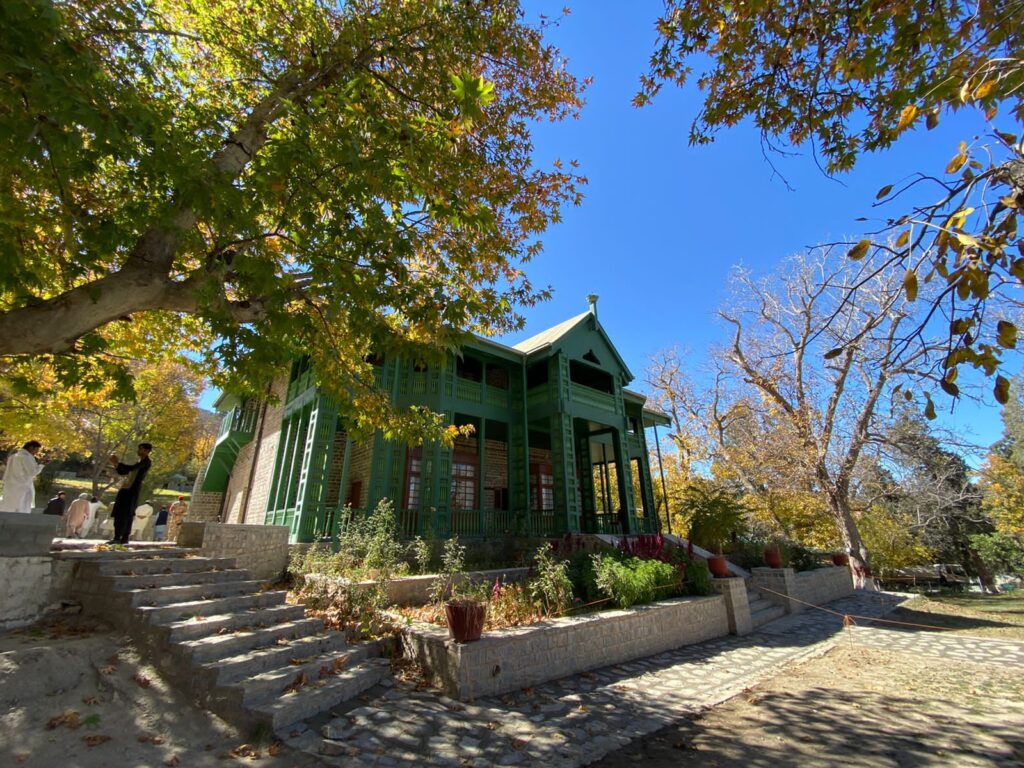
On a chilly morning announcing the imminent winters in the north of Balochistan, we leave for the city of Ziarat - a place that has always found much space in our national narrative. The drive is beautiful, much like the rest of Balochistan. Giant, hoary mountains accompany the upsurge of dust that our car leaves behind in its wake. Vegetation starts coming into view as we near our destination. Even though Ziarat is famed for its juniper trees, those are the last to be sighted. The first ones are the apple trees, and they are such a distraction from the otherwise dull hues of the vista. They shine with a spectacular gleam against the sombre background, little mines of gold proclaiming the potential of this region.
The city of Ziarat itself is a hill station, and by that definition, comparisons with Murree or Galiyaat are not far-fetched. As we pass the impressive residential schools and government buildings and make our way to the Residency, I cannot help but have a sense of deja vu. After stopping at a roadside restaurant for a cup of Sulemani tea, where the hotel owner complains that there’s no business in the winters owing to the extreme cold, we finally end up in the Residency, the place where the founder of this country spent his last days.
It’s almost poignant, this visit. Every Pakistani who’s grown up in this country has lived, albeit vicariously, the reality of this place. It has dotted all our calendars, has been touted as the most popular tourist destination in Balochistan, and is also present on our 100 rupee currency note. It’s also political, this place. Stories abound about the Quaid spending the last days of his life here, after having been diagnosed with tuberculosis, and there are controversies over whether those by him cheated him at the last moment.
As we enter the compound of the Residency, work is underway on the lawn in front of it, just around the statue of the Quaid that has been erected at the entrance. The front entrance has been blocked, and we are to enter by the back door. The guide by our side tells us to take our shoes off before entering. Even if this country has let many of the Quaid’s principles go astray, it's still encouraging to see that respect for his personality is maintained. The wooden floor, smooth and cold, creaks beneath our feet as we walk into the house. We are greeted by the ghosts of our national history.
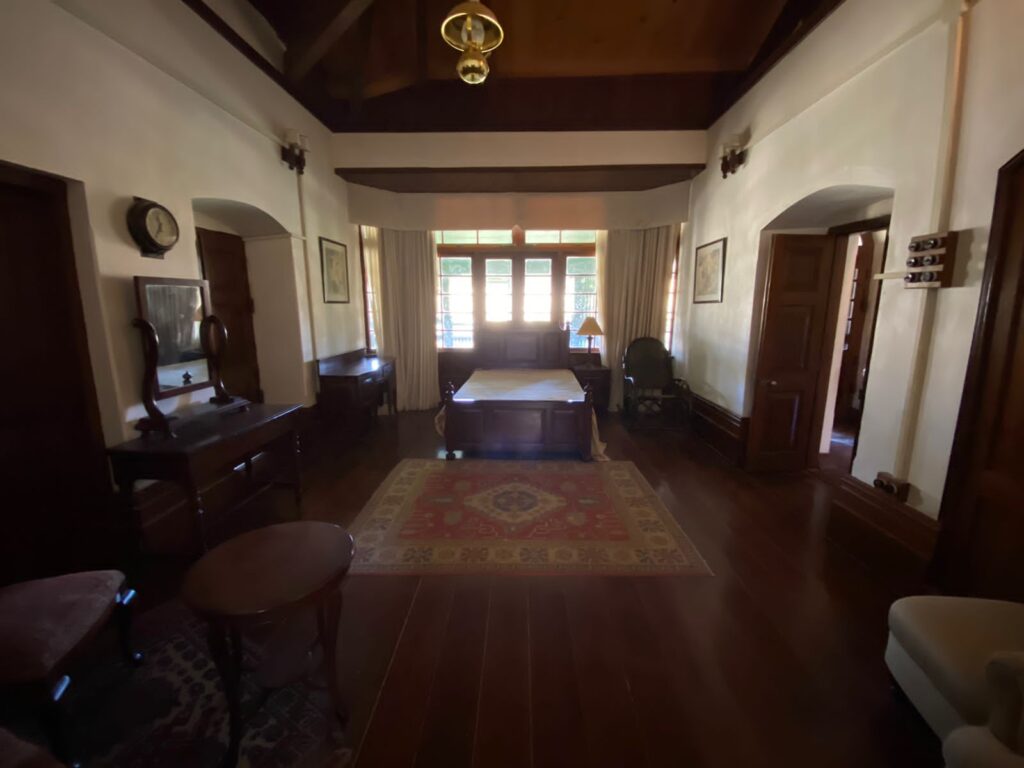
It’s difficult to place exactly what's original anymore in the house. The light bulbs clearly are not, the place used to be lit up by oil lamps. Some of the walls have been redone, as have the floors. But there are some things that continue to be in their original shape. Some of the furniture is exactly what Quaid used. His rocking chair, for one, and as are the sanitary fittings in the washrooms. The clock also remains the same, even though the time has changed. Some of the original instruments and cutlery used by the Quaid are now displayed in the adjoining gallery that hosts a variety of pictures. It’s not an enormous house, really, English in appeal, and has about eight rooms of decent proportions. The living and guest areas are on the ground floor, while the rooms of the Quaid and Fatima Jinnah, are on the first floor. Attached to the Quaid’s room is the room of his doctor. The washrooms of both the siblings have an external entrance, from which the cleaners used to enter and leave.
Even when lit by the recently installed lights that reflect on the numerous wall hangings, it is a sombre place. It’s classical, well-designed, and the marvellous balconies present you with an astounding view of the opposing mountains. But the air in the place is always dense, almost sad. And it may have to do with the reality of what the building has seen in all these years.
In 2013, the Ziarat Residency was attacked. For fifteen minutes, members of a separatist group stormed the place and burned the building. The real damage was only external, our guard tells us, and the residency was restored in a matter of time; even if the colour scheme was slightly changed.
And then there are so many alternate versions of the truth as well, and some of the more pressing ones as to what really happened are presented by Fatima Jinnah in her book, "My Brother."
And then there are others.
Every person we meet in this country is a political pundit, "The Quaid has already died when in Ziarat", a person who claims a family member worked for the Quaid tells us. "The ambulance and him waving at people were all a hoax to prevent disarray." My routine travels to various parts of the country have taught me to take everything with a grain of salt.
It’s been 74 years since the Quaid’s death and 75 since the birth of this country. And as we leave the Residency, my Twitter feed tells me about a long march initiated in another, disconnected part of the country, for "real" freedom.
Almost a century later, we are still riddled by the basic questions of what exactly the meaning of freedom, and consequently our country, entails.
***
Conversations in Balochistan have always been charged; there is much more to the province than can logically be covered in one sitting (or an article, for that purpose), not that I am looking for answers, only some understanding. While the backgrounds of these talks have ranged from government offices to private settings - we’ve dwelled upon the various burning issues of the province: missing persons, Sui gas woes, separatism, resources - the textbook reading of the peril in the province. Even though things appear to have taken a lull, the case of Shari Baloch, a thirty-year-old schoolteacher who had two children and held a master's degree, and who blew herself up near the Confucius Institute in Karachi University, opened up some new fears.
A new generation of Baloch - educated, enlightened, and resourceful - may now be on the cards to take on the state.
Today, we are sitting with a senior government official who has worked in various districts of the province. As we are being fed the quintessential Baloch delights of rosh and sajji, he narrates to us his experience in the wake of floods in Kharan district. He is on about the resilience and the cementing of self-respect of the people, who would refuse to take alms even while all they had was washed away by the floods.
"They would tell us to offer these to other people."
The conversation switches to the education of the people and how in Kharan the libraries would be swarming with people. Himself a survivor of two grenade attacks, he then proceeds on to tell us about making acquaintance with Muhammad Noor Maskenzai, ex-Chief Justice of the Balochistan High Court and the Federal Sharia Court. He tells us about his endeavours to promote education in his home district, and waxes lyrical about his personal book collection that Maskenzai was kind enough to show him.
The talk then dwindles to more official matters, our plans for distributing the rations and tents that we have received in the district as aid. A lot of NGOs are on the ground working with us, as are philanthropists and celebrities. However, so immense is the poverty we have seen in certain places that there’s a gloomy feeling that nothing will be enough.
It’s late, about 10 p.m., and most of the cities in Balochistan cease all human activity after 7 p.m. So we get ready to leave, preparing for another day. As I reach the door of the guest room to exit, someone in the group gasps.
“Maskenzai has just been shot dead."
***
There is of course a lot more than meets the eye in Balochistan, and all of it isn’t always reported, or even understood to be honest. In many ways, it is also a place of contradictions, breaking much of one’s preconceived notions as they come dashing to the ground. We worked in the province with the first and only female deputy commissioner in Balochistan. In some ways, it heralds a new era in the province’s history. It’s interesting to note that our neighbouring district is Jaffarabad, where in 2008, the honour killing of five women was defended by a Baloch senator as "local culture". What’s even more interesting is the fact that both that senator and this deputy commissioner hail from the same tribe.
I do not, by any stretch of the imagination, pretend to be an expert on the province. No place is a monolith, not a province of such dimensions, at least. As I recollect my memories of the province, I’m reminded of one Balochistan where private museums attached to residences carried private bars that boasted imported wines, and where I was told that Balochistan has traditionally been a secular place.
I’m also reminded of the religious sloganeering in parts so remote that none of the NGOs had yet reached for aid.
From locals siding with their sardars to locals denouncing them; from people agitated with the flow of life here to people living life as if nothing was out of the ordinary, from bookshops in Quetta swarming with people buying Western fiction to news of unrest in the peripheries of the city, there are too many impressions of Balochistan to catalogue. And sometimes it’s easy to forget the harsh reality of life here, at least for an outsider.
As you wander beside the pristine Hannah Lake, that now is again full of water after having dried up - with school-children scurrying around the place as it’s their official excursion here, or as you drive in the north of the province where solid roads enveloped on both sides by magnificent views that you can mistake for an African savannah had it not been for the lack of animals, or as you wander the Jinnah Road with its neat divider of lush trees, finding Baloch handicrafts to take back home as traffic continues around you ruthlessly, or as you visit a school in Qilla Saifullah where the dreams of children are as mundane (and crazy) that would be anywhere, with most of them secretly waiting for the recess to go out and play - you’re led to believe everything is normal.
Or will be.
But it takes one tweet, or one news item, or one person gone missing, or one attack to bring you back to reality. For all it matters, my time in Balochistan only presented me with more questions about the peril of this province - questions that perhaps have gone unanswered for far too long. And places aren’t made of maps or minerals - they are made of people. To go about this peril, it’s perhaps essential that the question-and-answer segment is now taken over by the people who constitute this place.


